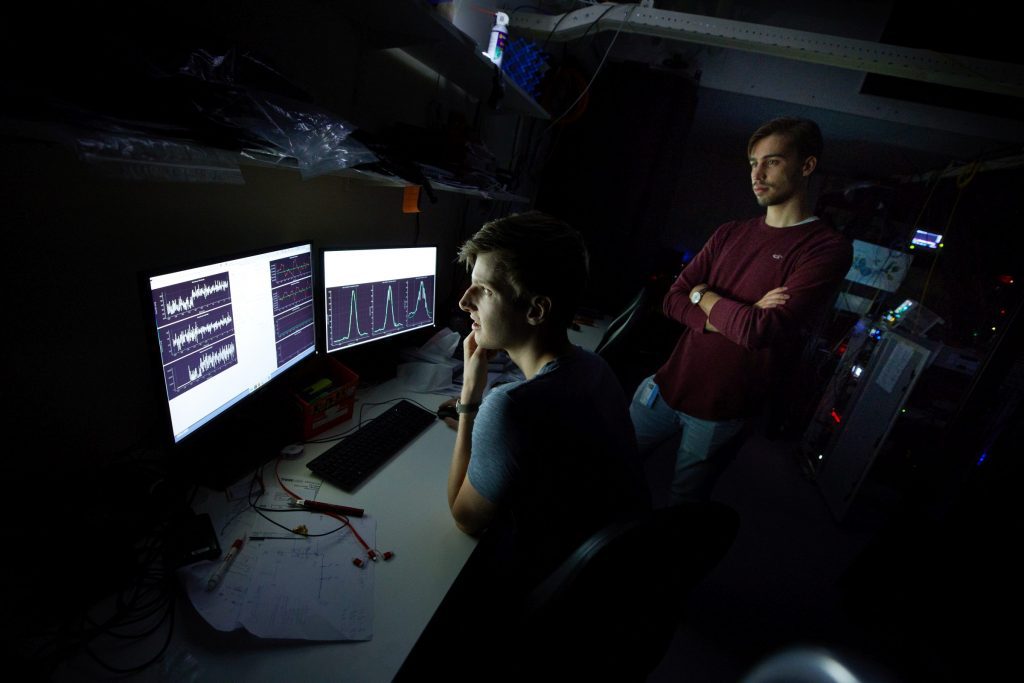Physicists are making groundbreaking advances in particle detection by harnessing quantum sensor technology, according to recent research. These superconducting detectors are poised to transform high-energy physics experiments through their unprecedented precision in both spatial and temporal dimensions.
The research team from Fermilab, Caltech, NASA’s Jet Propulsion Laboratory, the University of Geneva, and Federico Santa María Technical University has successfully tested Superconducting Microwire Single-Photon Detectors (SMSPDs) in real-world conditions at Fermilab. When exposed to high-energy beams of protons, electrons, and pions, these quantum sensors demonstrated remarkable efficiency with significantly improved resolution compared to conventional detection methods.
What makes these sensors revolutionary is their “4D” capability. They can simultaneously track particles with high precision in both space and time. This dual functionality addresses a critical challenge in particle physics: deciphering the complex chaos of subatomic particles produced during high-energy collisions. As particle accelerators become more powerful, generating millions of particles per second, the ability to precisely track individual particles becomes increasingly vital.
“In the next 20 to 30 years, we will see a paradigm shift in particle colliders as they become more powerful in energy and intensity,” explains Maria Spiropulu, Professor of Physics at Caltech. “And that means we need more precise detectors.“
The technology has its origins in quantum networks and astronomy applications, where similar sensors have been used for quantum information teleportation and deep space optical communications. For particle physics, the researchers adapted the technology by using SMSPDs with larger surface areas specifically designed to detect charged particles—a capability essential for particle physics but unnecessary for other applications.
Perhaps most exciting is the potential for these sensors to detect previously unobservable particles, including possible components of dark matter. “This is just the beginning,” says Si Xie, a scientist at Fermilab with a joint appointment at Caltech. “We have the potential to detect particles lower in mass than we could before as well as exotic particles like those that may constitute dark matter.“
The successful testing of these quantum sensors represents a significant step toward developing the advanced detection systems needed for future particle physics projects, including the planned Future Circular Collider and muon collider. By combining quantum technology with particle physics, researchers are opening new windows into the fundamental nature of matter, energy, space, and time, potentially unlocking mysteries that have long eluded conventional detection methods.
Reference: “High energy particle detection with large area superconducting microwire array” by Cristián Peña, Christina Wang, Si Xie, Adolf Bornheim, Matías Barría, Claudio San Martín, Valentina Vega, Artur Apresyan, Emanuel Knehr, Boris Korzh, Jamie Luskin, Lautaro Narváez, Sahil Patel, Matthew Shaw and Maria Spiropulu, 4 March 2025, Journal of Instrumentation. DOI: 10.1088/1748-0221/20/03/P03001




